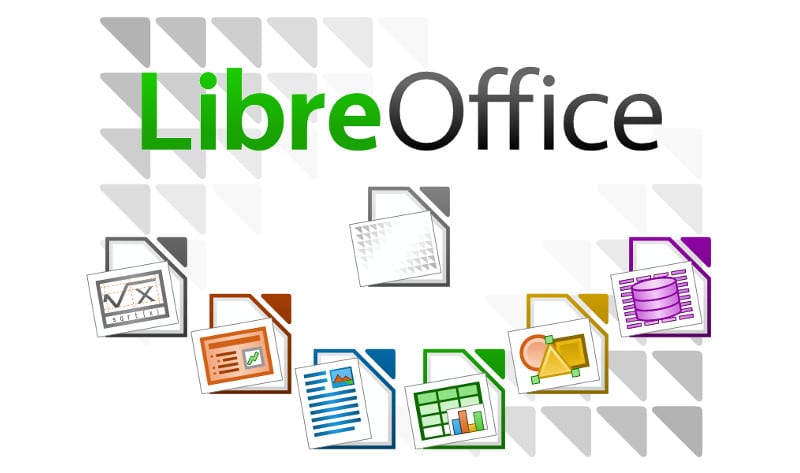An office suite is designed to make things easy. It is a bundle of software put together to facilitate the work of an organisation. Open source office suites like OpenOffice and LibreOffice have evolved considerably in recent years, and smaller businesses can benefit by using these free software in place of Microsoft Office.
A single new office suite can change the way we think about office automation. Inventing it using AI, ML, etc, remains a challenging struggle for a creative programmer. Programmers belonging to the open source community are now using better code to reconstruct the decades-old king of the office – Microsoft Office. This has resulted in the birth of the following new open source office suites:
- Apache OpenOffice, which is a comprehensive suite for Windows, MacOS and Linux.
- Open Document Foundation’s LibreOffice, which is a fork of Open Office for Windows, MacOS and Linux.
- NeoOffice, a Java based branch of OpenOffice for MacOS.
- Calligra, which runs on Windows, Linux, free Berkeley Software Distribution (BSD) and MacOS.
Closed and licence based office suites like Microsoft Office and Word Star have somehow ruled the enterprise and personal desktop for several decades.
Popular open source office suites: OpenOffice and LibreOffice
If you are thinking of purchasing MS Word, remember that it may cost you US$ 100 or perhaps even less to purchase and install it on your computer. OpenOffice Writer works the same way as Word. Now more popularly known as Apache OpenOffice and very similar to LibreOffice, OpenOffice can be an effective alternative to MS Word and even some other familiar MS Office applications.
Apache OpenOffice is a completely free suite of programs. It includes a word processor comparable to MS Word, a spreadsheet comparable to MS Excel, presentation software comparable to Power Point, a database comparable to MS Access, and even drawing and math equation tools similar to those included in MS Office.
OpenOffice currently doesn’t have all of the advanced features that MS Office offers. It can, in fact, read and write documents created with MS Office. This means that you can happily exchange documents with people who use MS Office.
The documents created by OpenOffice may look different when opened in MS Office. The programs are compatible with each other in that they can both read and write the same file formats, but in practice, they are not identical. Minor and occasionally major reformatting is required while exchanging documents between the two. If this minor inconvenience matters, OpenOffice may not be the best choice for you. OpenOffice is available for Microsoft, Mac and Linux. It looks exactly the same no matter what platform you use. OpenOffice is completely free. Just download, install and use it.
LibreOffice is a separate version of OpenOffice. These two office assistants are still very similar and LibreOffice includes OpenOffice Basic. However, Apache OpenOffice may not be able to keep up with the speed of development in LibreOffice.
There are many reasons why LibreOffice can win. First of all, it has many more programmers working on it and comes with better community support. Second, LibreOffice’s choice of open source licence gives it an advantage. Third, LibreOffice has a better marketing strategy. This includes faster development, better distribution, a light website and a greater focus on meeting the customer’s needs.
LibreOffice is becoming more customer focused. It is trying to look sleek and professional, attracting users by providing a more polished product. The code of both OpenOffice and LibreOffice is smaller, less buggy and crash-resistant. Besides, LibreOffice has added features. For example, if one wants to create an Adobe PDF-like file, this is possible in LibreOffice but not in OpenOffice. The performance of LibreOffice on Microsoft and Apple file formats has improved considerably, and Windows-specific improvements such as the ability to work with Microsoft’s Active Directory have been introduced.
MS Office versus open source office suites
MS Office is still more powerful and easier to use. It has also more applications and is compatible with the vast majority of Word documents. Today, MS Office 365 is an ecosystem that includes online versions, a terabyte of online storage, and touch-oriented apps for Windows phones, Google Android, and Apple iPads and iPhones. OpenOffice and LibreOffice don’t have a vast number of programs, nor the cloud infrastructure or money to compete with MS Office.
OpenOffice offers a language-independent application programming interface (API) which allows users to program the software in different programming languages (e.g., C++, Java, Python, the command line interface (CLI), OpenOffice Basic, JavaScript, object linking and embedding (OLE), etc). The popularity of the standardised Open Document format for office applications is growing. Corporate users often demand the integration of office productivity with existing workflows and applications. They also often require additional functionality and the special customisations of existing features. That is one of the main goals of OpenOffice. Small businesses don’t have the budgets for enterprise applications. So, in such cases, open source can provide free options. These businesses can replace MS Office in a full-blown ERP system.
 Presently, Windows has the highest share in the PC market, followed by Apple’s MacOS. Linux and other open source OSs have only a tiny market share. Even if one wants to stick to closed source OSs (MacOS is partially closed source), the business can still take advantage of a vast amount of open source software. The use of an open source alternative can provide good financial benefits. Open source suites are compatible with MS Office file formats such as .doc and .xls.
Presently, Windows has the highest share in the PC market, followed by Apple’s MacOS. Linux and other open source OSs have only a tiny market share. Even if one wants to stick to closed source OSs (MacOS is partially closed source), the business can still take advantage of a vast amount of open source software. The use of an open source alternative can provide good financial benefits. Open source suites are compatible with MS Office file formats such as .doc and .xls.
LibreOffice is doing well in Europe, South East Asia, North and South America. it is experiencing massive growth even in countries like India, Japan and Taiwan. Still, there are two regions that remain a challenge for LibreOffice. These are China (mainly due to language barriers and the lack of information flow in and out of the country) and Africa (mainly due to economic conditions).The downside for LibreOffice is that since volunteers work on it in their free time, it can’t evolve as fast as a product developed by a private company with dedicated development teams. Still, it manages to release improved versions every six months.
The future of LibreOffice
The future belongs to the cloud and mobile. So one of the most recent releases of LibreOffice is LibreOffice Online. Creating this was more challenging than people think. LibreOffice is a massive and complex piece of software, and the code has to be considerably reduced to its essentials to run on the cloud.
Once LibreOffice acquired group editing capabilities, the community started reducing its essential features to reduce the code base to run easily on a server. Google Docs and Office 365 are already running successfully on the cloud as online versions. Looking at these products, the LibreOffice community team brought in lots of modifications and improvements. One needs a file synchronisation and storage solution to manage documents. LibreOffice currently works with Netcloud, Seafile, Pydio and other such services for its online version.
The mobile version is more complicated than the cloud one. One has to further reduce everything down to a very small code base that can run on mobile devices without hungrily eating into the battery and system resources. Presently, the LibreOffice View app is available to view documents on mobiles. The full-fledged LibreOffice mobile app is still a work in progress.
Interoperability is the big challenge for LibreOffice. Despite the creation of ODF (Open Document Format) as an ISO standard for documents, Microsoft has worked on its own standard, which is called Office Open XML (OOXML), and has got it approved as an ISO standard in a controversial manner. This has resulted in interoperability challenges, as a result of which most people end up going back to MS Office and OOXML. As far as individuals are concerned, the best advice is to create documents and store them in ODF format.
The right way to switch from MS Office to LibreOffice is through migration. Recently, Italy’s Ministry of Defence migrated some 25,000 to 30,000 desktops to LibreOffice from Microsoft Office. It executed a different plan for each of its combat units (Air Force, Army and Navy). Now, its document management software is compatible with both LibreOffice and MS Office.
LibreOffice has come a long way in the past seven years. It is now a very mature and stable project. MS Office isn’t available for Linux and has been a second class citizen on MacOS for a very long time. For someone who jumps between MacOS, Windows and Linux, LibreOffice is the only choice. As far as Ubuntu tablets are considered, LibreOffice works great on them.
LibreOffice is now a very mature and stable project. This powerful and free office suite is used by millions of people around the world. Its clean interface and feature-rich tools help to unleash creativity and enhance productivity.




